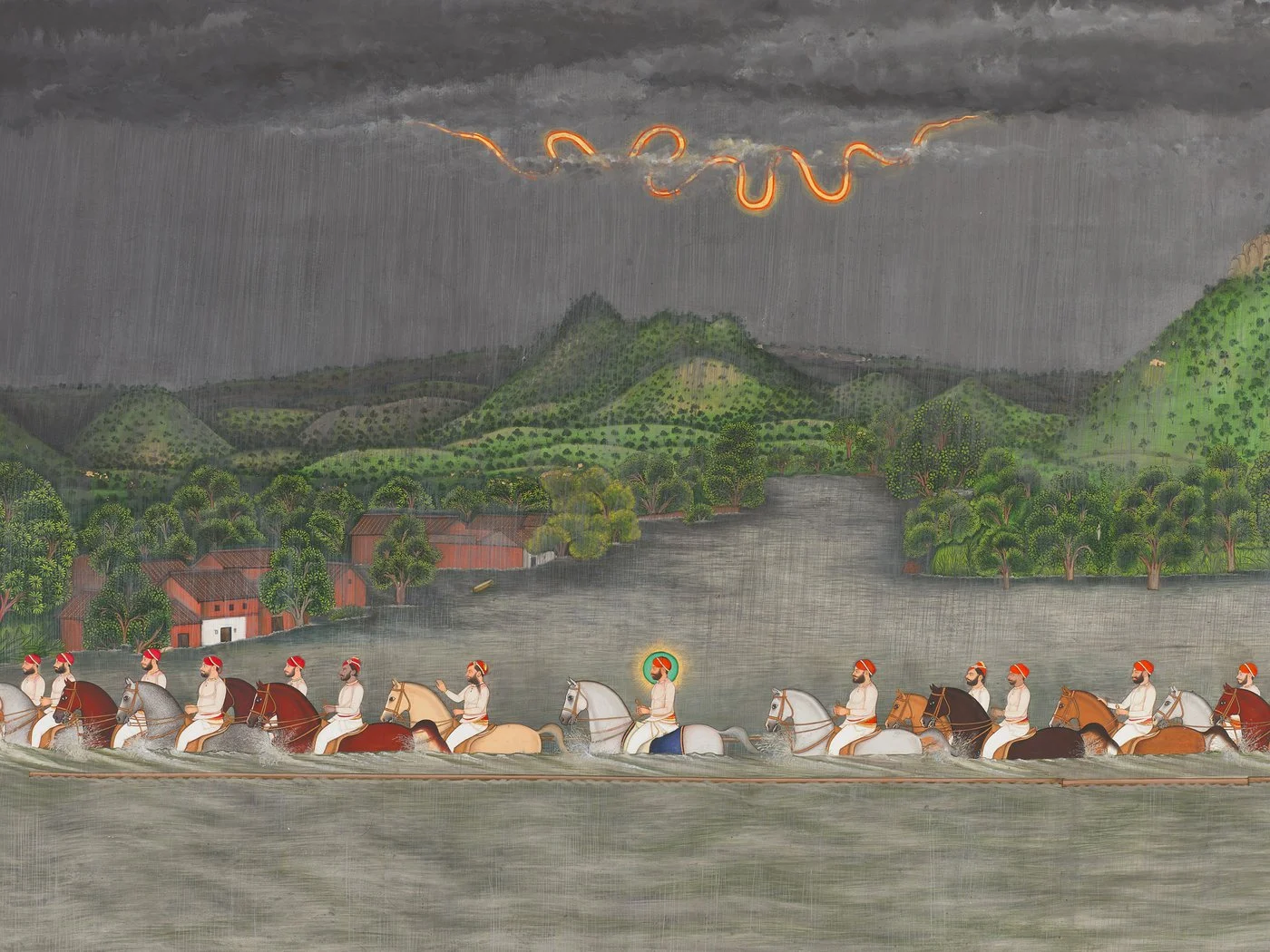Thursday, April 24
Windows Into the Past
Sonia Ivancic '25 (Arts Editor, 144th Board) in Arts | April 21, 2023

Tucked in the bowels of the Smithsonian's National Museum of Asian Art in Washington, D.C., sits a six-foot-long painting from 19th-century Udaipur, India. What’s so special about this massive watercolor piece? It may give us just the hope we need to tackle the growing list of climate change battles we must overcome to keep our planet habitable.
Last November, the National Museum of Asian Art unveiled a new exhibit titled A Splendid Land: Paintings from Royal Udaipur. This exhibit is a collection of paintings from Udaipur, India, from around 1600 to 1800 AD. This Indian region is arid most of the year, so seasonal monsoon rains provide most of the water necessary for survival. In traditional, ancient Indian art, court paintings were made to portray royalty as all-powerful and majestic. Thus, these paintings were not useful sources of information about daily life in India since they provided a skewed picture of history, only focusing on the elite. Furthermore, Bhava or the emotion one feels after viewing a form of art, was central to all art forms at this time.
Maharana Amar Singh II, the king of Udaipur between 1698 and 1710, completely changed the culture surrounding art. As a prince, Singh was banished from the kingdom due to a dispute with his father, and during this time, he met a revolutionary artist that introduced him to a completely new world of painting. Singh saw realistic landscapes, pieces that were not solely meant to pay homage to the royal family. Once the prince took power, artwork expanded both. Paintings became much larger in size, partly to accommodate the intricate landscapes Singh desired to portray. Instead of abstract and stylized objects and people, paintings showcased landscapes from daily life in Udaipur and were rich in detail: such as a Holi festival or a Tiger Hunt. Through their unique details, colors, and textures, the element of Bhava is still very present in these works. The emotions each painting stirs within the viewer, coupled with their story-like depictions of life in Udaipur, have proved invaluable historical data chronicles.
New research suggests that these court paintings may even become environmental data sources. Take, for example, the painting Maharana Fateh Singh Crossing a River During the Monsoon. This painting illustrates an overflowing river with houses and greenery on the brink of flooding on either side. 13 men on horses cross the river amidst pouring rain, their horses belly-deep in water. This painting is not, in fact, depicting a natural disaster. Instead, it showcases the abundance of the monsoon season and daily life during these months. What sets this painting apart is the minuscule waterwheel hidden at the edge of the painted river. It is there for the monsoon season, sitting just above the river's water level, and is used to scoop and feed water to nearby trees and shrubs. The fact that the artist decided to include this seemingly insignificant piece of infrastructure points to the importance of monsoon infrastructure in Udaipur.
This pattern continues throughout the court paintings. What looks like basic landscapes of buildings and lakes are complex, human-manufactured water collection systems that the people of Udaipur built and relied heavily on to survive the hot, dry months between monsoon seasons. The painting, Maharana Fateh Singh Crossing a River During the Monsoon, has an inscription stating that the king and his officials are inspecting the monsoon infrastructure. With all this information, curators working in the exhibit realized the people of Udaipur prided themselves on living sustainably off the rains. The interconnectedness of nature and society is evident in each scene.
The numerous waterways in Udaipur’s court paintings mirror current geographical data of rivers in this region, making all these paintings reliable and historically accurate. This exhibit shows an applicable example of how the climate has changed in the past, and how societies have successfully and sustainably adapted to these changes, living in harmony with the unpredictable nature of the environment. We can use this evidence of our past triumphs, not to overcome, but to work in tandem with nature, as inspiration and hope for the future of water management in a time where droughts and floods disproportionately pummeled areas.
While the geographical applications of these paintings are still being discovered, what is becoming clearer is the intersection between science and art. We could only fully realize the relevance of the monsoon painting through the coupling of Bhava and geographical details. Turning to art is a new path to explore in order to combat climate change by using windows into the past.
Related Articles
- Mirror, Mirror, on the Wall... Who’s the Most Hated of Them all? Melina Kyriakopoulos ’27
- L Factor or L moment? Lawrentians Take the Stage Celestine Sutter ’27
- Spring Orchestra Concert Vincent Jie ’27
- Shedding Light on Julius Caesar Anton Popowitz ’26
- Threaded Up Thursdays: Intertwining Soul and Style Melina Kyriakopoulos ’27
Recent Articles
- Announcing: Valedictorian, Aurelian Speakers, and Faculty Speaker Sophie Liu ’27
- Senior Profile: Sophie Cheng ’25 Katherine Qiu ’27
- Debunking the Dining Hall Debate: Is Lawrenceville’s Dining Really That Bad? Isabelle Lee ’27
- Welcoming Our New VPs for 2025-2026 Sophie Liu ’27
- A Sweet Return: Melba Reopens with New Flavors and Community Spirit Ella Song ’27